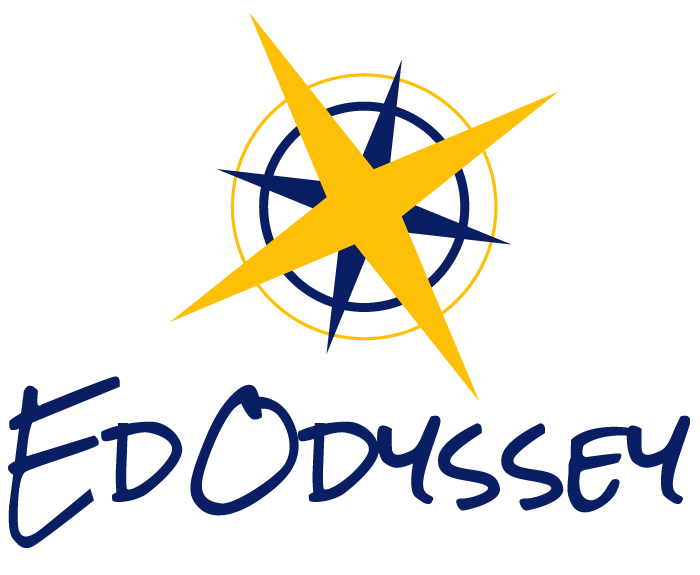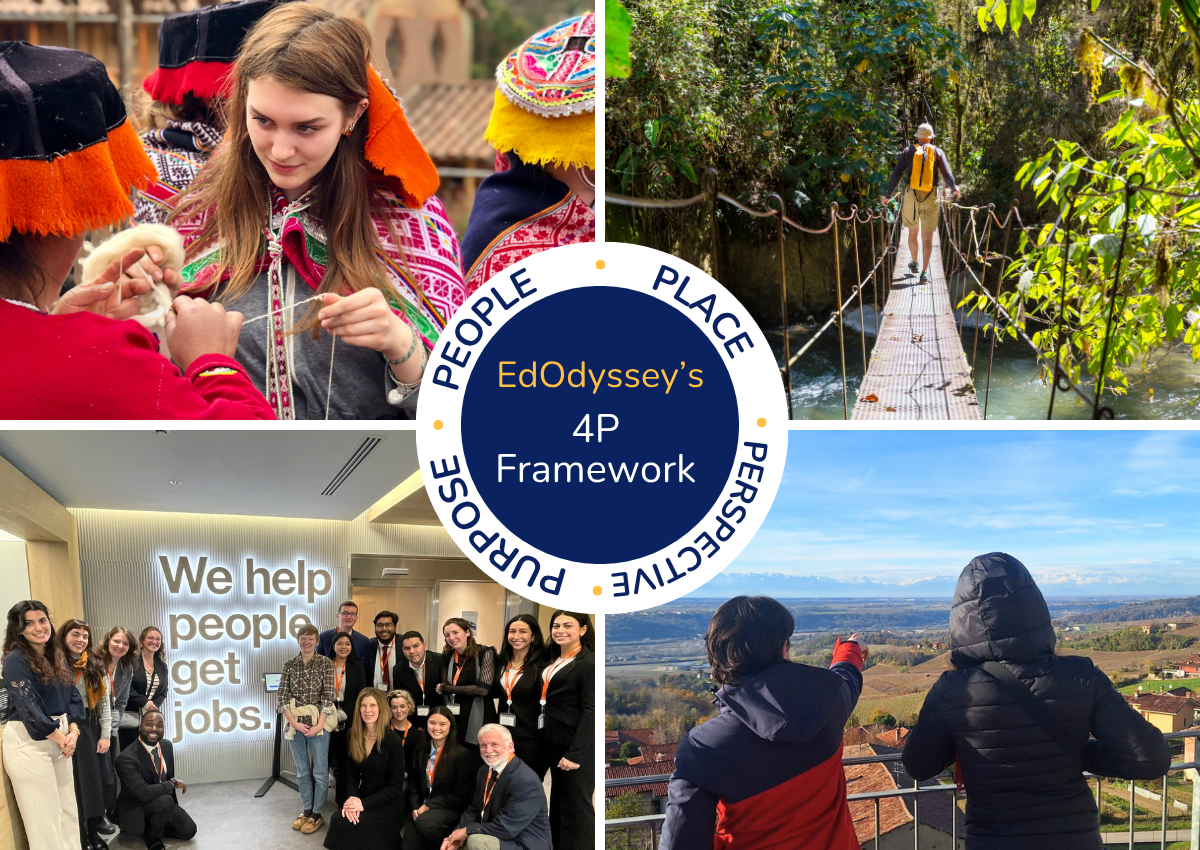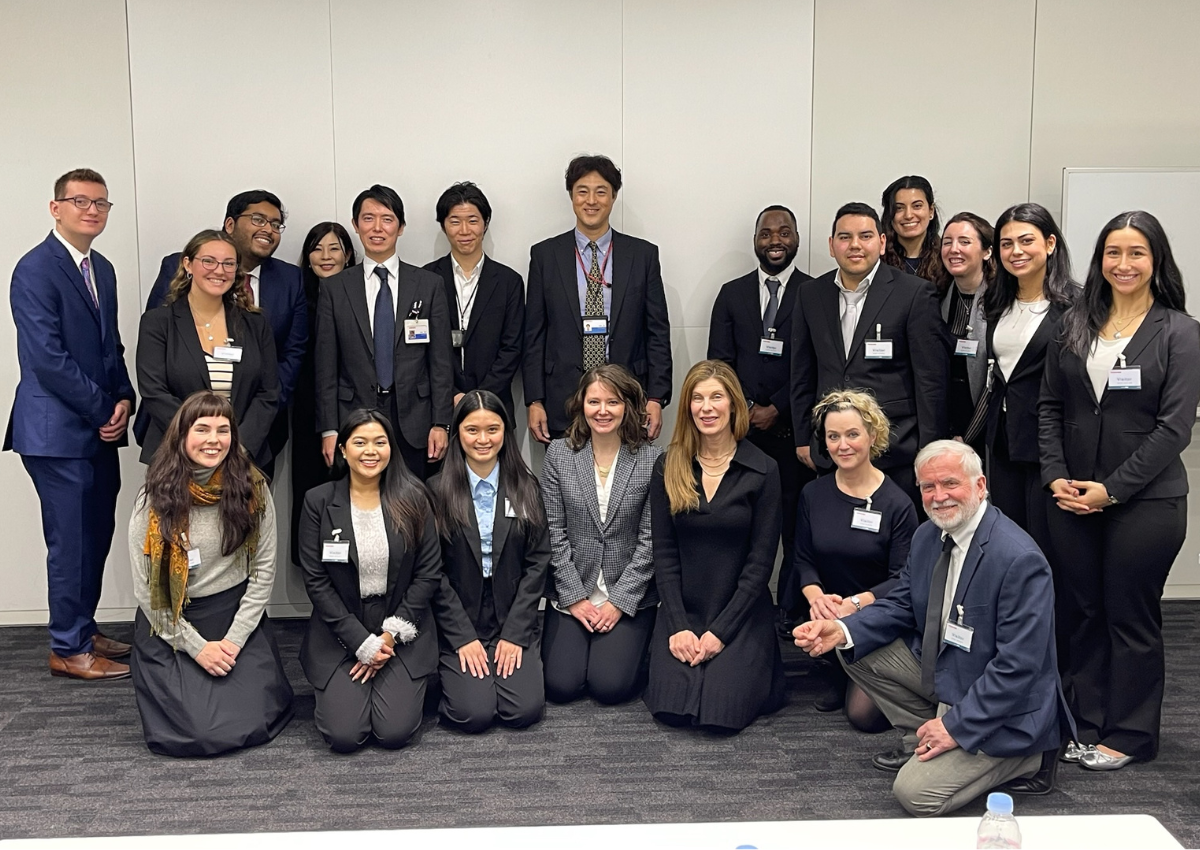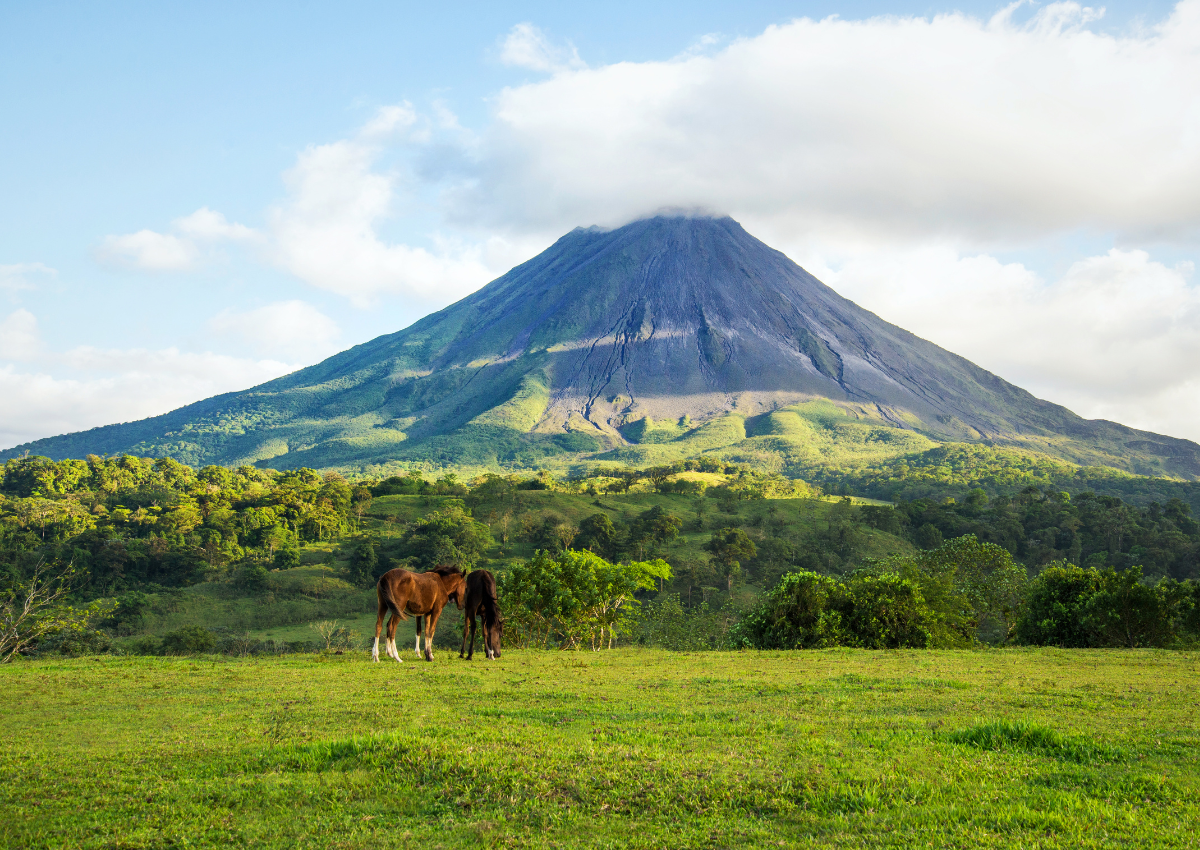What Makes EdOdyssey Programs Unique: The 4P Framework in Action
International Education Week is the perfect time to spotlight what meaningful educational travel looks like in practice. Before committing to a partnership with us, educators often wonder, “How do we know our students are experiencing something deeper on an EdOdyssey trip than they would on a vacation?”
This is where our 4P Framework comes in. People. Place. Purpose. Perspective.
As a fundamental element of every EdOdyssey program, the 4P Framework shapes each planning decision our team makes, from designing the most intricate details of the itinerary to carefully curating meetings and activities with local professionals and community members. This creates a structure that propels an ordinary trip into a powerful and transformative journey.
Let’s take a closer look at what the 4P Framework looks like in practice across some of our most popular destinations.
PEOPLE: LEARNING WITH COMMUNITIES, NOT JUST ABOUT THEM
People are the foundation of every EdOdyssey experience. Students engage with individuals who generously share their craft, research, lived experiences, and histories. Relationships are important to us, and we choose these interactions thoughtfully in a way that supports student learning and the goals of our partners.
In Italy, students meet with artisans in Florence’s Oltrarno neighborhood who preserve traditional craft practices inside small, often multigenerational workshops. They talk directly with the individuals who shape Italy’s cultural identity, whether that is a family winemaker in Sicily explaining how volcanic soil informs agricultural decisions or a maker who demonstrates how an inherited technique becomes a form of resilience.
In Japan, this focus takes shape through leaders like Eiko Ito-san, a Japanese etiquette coach who orients students to the cultural foundations that support respectful engagement. Her guidance shifts student behavior in tangible ways. They understand how to approach communities thoughtfully, how to move through shared spaces, and how to develop meaningful connections throughout their time in Japan.
In Costa Rica, the focus on people emerges through our community partnerships. In San Ramón de La Virgen de Sarapiquí, a women-led cooperative welcomes students into their daily routines, offering a look at rural life, sustainability practices, and the social fabric of a close-knit community. Students join conversations, share meals, and learn from individuals who speak directly about their daily reality.
Across all EdOdyssey programs, the emphasis on people first is intentional. Students are not passive tourists. They learn from individuals whose insights create depth in each and every program and align with one of our core values: authenticity. This means that they are able to understand global issues through the lens of real lived experiences rather than abstract ideas from a website or textbook.
We also build in time and activities that support relationship-building and belonging within each cohort of students.
PLACE: LOCATIONS BECOME LIVING CLASSROOMS
Place influences every part of the EdOdyssey learning experience; cities, neighborhoods, landscapes, and community spaces are transformed into immersive learning environments.
In Italy, students walk through Ortigia’s narrow streets while discussing urban evolution, examine sustainability initiatives along the Arno, or consider contemporary art and architecture as part of the Venice Biennale. Each location reveals something distinct about Italy’s identities and the differences between regions.
In Japan, students explore Tokyo neighborhoods like Shinjuku, volunteer at the community-based Gojome Farmers Market in Akita, or move through Kyoto’s historic Nishiki Market with questions that tie back to culture, economic change, and regional traditions. Each site is chosen because it offers a specific vantage point into Japanese society.
In Costa Rica, the rich biodiversity provides opportunities for academic exploration. Students visit Monteverde, Manuel Antonio National Park, and community organizations in Cartago and Limón. A visit to Turtle Rescue Cahuita in Limón leads to conversations about environmental stewardship, conservation practices, and the connections between the community and ecology.
The EdOdyssey team puts a lot of thought into how places are selected for each program. Faculty leaders know exactly why a site appears in an itinerary and how it relates to their academic outcomes. Students see how the physical environment around them shapes human activity, policy, and cultural identity.
PURPOSE: PROGRAMS ARE DESIGNED WITH CLEAR LEARNING OUTCOMES
Purpose guides an EdOdyssey program from start to finish. We collaborate with our partners to align programming with specific academic and developmental goals, so that learning is tied to faculty priorities as well as student growth.
Each of these examples below is a real student experience that was tied to clear academic goals on their specific program.
In Italy, students analyzed food systems alongside cooperatives in rural Sicily. They practiced field observation in Florence’s historic markets. They engaged in critique sessions in Venice that connected their on-the-ground learning with faculty coursework.
In Japan, program design has included intentional engagement with business leaders, researchers, community centers, and local organizations. Students practiced intercultural communication, explored social challenges, and connected classroom knowledge with the realities of Japanese workplaces and community spaces.
In Costa Rica, students in pre-health programs shadowed or met with public health professionals to understand how preventive care and community outreach shape the country’s health outcomes. They examined the relationship between policy, culture, and healthcare accessibility.
Leaning into purpose ensures that every activity pushes learning forward. It protects EdOdyssey programs from becoming generic travel experiences and gives students language to articulate what they learned, how they grew, and why it matters.
PERSPECTIVE: FROM FIRST IMPRESSIONS TO MEANINGFUL INSIGHT
This is where the most powerful learning happens. As their journey goes on, they begin to see the complexities of a place and recognize how their own viewpoints shift in response to their observations and interactions.
In Italy, tracing the influence of migration on Sicilian cuisine or examining climate pressures on local communities helps students understand the country beyond the familiar postcard façade. They learn how culture adapts and how history is layered into daily life.
In Japan, visiting Itsukushima Shrine in Hiroshima, exploring the natural landscape around Mount Fuji, or staying at a traditional ryokan invites students to see Japan as a constellation of interconnected stories rather than a collection of iconic destinations. They shift from surface recognition to deeper understanding.
In Costa Rica, learning from Indigenous leaders who protect ecosystems and cultural traditions introduces students to perspectives on sustainability that challenge widely held assumptions. Students witness how community resilience is built and maintained. They examine their own roles within conversations about environmental responsibility across the globe.
These shifts in perspective support students as they grow in intercultural competence, critical thinking, and self-awareness. Our partners see outcomes that support their own objectives as well as align with our field’s priorities for educational travel.
INTERNATIONAL EDUCATION WEEK: A TIME TO REFLECT & CONNECT
This week, we celebrate the power of global learning. It’s clear that the ROI is strong for both students and academic institutions.
The 4P Framework is a model that our partners trust, because our intentional method means that their students are approaching travel in an intentional way, not just as an accumulation of tourist experiences and passport stamps.
If you’re interested in exploring ways to engage your own students through educational travel, we’re here to collaborate, listen, and design a program that honors your goals and learning outcomes while creating space for students to learn, transform, and grow in memorable and meaningful ways.





